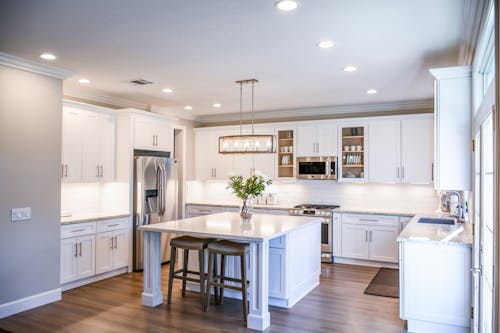“Achieve Serenity: Your Guide to a Perfect Minimalist Living Room
In the world of home decor, few styles offer the same sense of calm and clarity as minimalism. If you’re seeking a peaceful retreat from the chaos of daily life, transforming your main communal space into a **minimalist living room** is an excellent starting point. This guide will walk you through the principles and practical steps to create a serene and functional space centered around simplicity.
What is a **Minimalist Living Room**?
More than just stark white walls and empty spaces, a **minimalist living room** is about intentionality. It’s a design philosophy that prioritizes function, simplicity, and the absence of unnecessary clutter. The goal is to create a space that feels open, clean, and conducive to relaxation and connection, rather than being visually overwhelming.
Key Principles of Minimalist Design for Your Living Room:
1. **Less is More:** This is the core tenet. Focus on keeping only essential items that serve a purpose or bring you joy.
2. **Functionality:** Every piece of furniture and decor should have a reason for being there. Choose pieces that are practical and serve your lifestyle.
3. **Simplicity:** Favor clean lines, basic shapes, and a restrained palette. Avoid ornate or overly decorative items.
4. **Quality Over Quantity:** Invest in a few high-quality pieces that will last, rather than many disposable items.
Steps to Create Your **Minimalist Living Room**:
* **Start with Decluttering:** The most crucial first step. Ruthlessly remove items you don’t use, need, or love. This includes excess furniture, knick-knacks, stacks of magazines, and anything that adds visual noise. Organize what remains.
* **Choose a Neutral Color Palette:** Minimalist spaces often feature neutral tones like whites, grays, beiges, and soft blues or greens. These colors create a calming backdrop and make the space feel larger and airier. You can introduce subtle texture or very limited pops of muted color.
* **Select Furniture with Clean Lines:** Opt for simple, well-designed furniture. A comfortable sofa with a clean silhouette, a functional coffee table, and perhaps a simple armchair are often sufficient. Look for pieces with hidden storage if possible.
* **Be Intentional with Decor:** This is where many minimalist spaces fall short if not done carefully. Choose only a few meaningful or visually appealing decorative items. This could be one large piece of art, a healthy plant, a simple throw blanket, or a curated collection of books. Avoid filling every surface.
* **Maximize Natural Light:** Big windows are a minimalist’s friend. Keep window treatments simple – light, sheer curtains or blinds that allow plenty of natural light to flood the room.
* **Simplify Lighting Fixtures:** Choose simple, functional lighting like a minimalist floor lamp or pendant light. Ensure sufficient light without overcomplicating the fixtures.
* **Create Open Space:** Arrange furniture to promote easy movement and flow. Avoid overcrowding the room. The space between items is as important as the items themselves.
* **Add Texture (Carefully):** To prevent the room from feeling sterile, introduce texture through textiles like throws, pillows, or a rug. Natural materials like wood, stone, and linen work well.
Benefits of a **Minimalist Living Room**:
Adopting a minimalist approach to your living room design offers numerous advantages:
* **Reduced Stress:** Less visual clutter leads to a calmer mind.
* **Easier to Clean:** Fewer items mean less to dust and tidy.
* **Improved Focus:** A simple environment can help you concentrate better.
* **Enhanced Aesthetics:** The focus shifts to the quality and design of the few chosen pieces.
* **More Spacious Feel:** Even small rooms can feel larger and more open.
Conclusion:
Creating a **minimalist living room** is an ongoing process, not a one-time event. It requires mindful choices about what you bring into and keep in your space. By embracing the principles of simplicity, functionality, and intentionality, you can transform your living room into a peaceful sanctuary that promotes relaxation and well-being. Start small, declutter one area at a time, and enjoy the journey to a more serene home.”




